This article was medically reviewed by Tu Anh Vu, DMD. Dr. Tu Anh Vu is a board certified dentist who runs her private practice, Tu's Dental, in Brooklyn, New York. Dr. Vu helps adults and kids of all ages get over their anxiety with dental phobia. Dr. Vu has conducted research related to finding the cure for Kaposi Sarcoma cancer and has presented her research at the Hinman Meeting in Memphis. She received her undergraduate degree from Bryn Mawr College and a DMD from the University of Pennsylvania School of Dental Medicine.
There are 15 references cited in this article, which can be found at the bottom of the page.
wikiHow marks an article as reader-approved once it receives enough positive feedback. In this case, 100% of readers who voted found the article helpful, earning it our reader-approved status.
This article has been viewed 154,937 times.
Maintaining good oral hygiene is important if you want to have healthy and strong teeth, steer clear of gum infections or disease, and avoid bad breath. Oral hygiene means cleaning and taking care of your whole mouth, not just your teeth. Combine brushing your teeth with flossing, scraping your tongue, and using mouthwash to give your entire mouth a thorough clean.
Steps
Brushing and Flossing
-
1Brush two or three times a day. The first step to cleaning your whole mouth and ensuring you maintain good oral hygiene is brushing your teeth frequently and effectively. Normally it is recommended that you brush twice a day, once in the morning and once at night. You can add a third time after lunch, but don't brush more than three times a day.[1]
- If you frequently brush more often than this, you risk wearing down your tooth enamel and damaging your gums.
- Each time you brush your teeth, you should do it for at least two minutes.[2] Try dividing your mouth into four sections and giving each one thirty seconds to help you keep track.
-
2Get your technique right. When you are brushing your teeth, it's important to use the best technique to maximise the benefit and minimise the risk of damaging your gums or wearing down enamel. Start by placing your brush at a 45-degree angle to your gums. Move the brush back and forward gently in strokes that are about the width of a single tooth and then continue the movement by gently brushing the entire surface of your tooth with an up and down motion.[3]
- Brush all the surfaces of the teeth, the outer surfaces, the chewing surfaces, and the inner surfaces.
- For the inner surfaces, tilt the brush up and brush up and down a few times for each tooth.
Advertisement -
3Floss regularly. Even if you're a diligent brusher, there some areas your toothbrush cannot reach. Flossing daily will help to remove any lingering substances that are caught between your teeth.[4] Just like brushing, it is important to use proper technique to avoid any potential damage from scraping teeth and gums when flossing. Wrap a length of floss around the index fingers on each of your hands, so there are around two inches of floss between your hands.[5] [6]
- Keep the floss tight against the tooth to remove plaque and avoid rubbing the gums. Gently move the floss with a back and forth movement. Make sure that you use only gentle pressure to avoid hurting your gums with the floss.
- If you maintain a good flossing routine and technique you will have healthier teeth and healthier gums.
- You should floss your teeth once a day.[7]
-
4Choose the right equipment. When you are brushing your teeth, it's important that you have the right tools for the job. Use a soft-bristled brush that fits inside your mouth easily and enables you to reach all areas without any trouble. You should replace your brush every three or four months. If you notice the bristles are getting frayed, you should replace it sooner.[8]
- Combine a good brush with a fluoride toothpaste that is approved by dental professionals.
- Look for a seal or marking on the package of the toothpaste to check it for a professional endorsement.[9]
- Avoid using an abrasive toothpaste for more than two weeks in a row because it can wear down your tooth enamel and increase sensitivity
Cleaning Your Tongue
-
1Brush your tongue.[10] The most common and easiest way to clean your tongue is just by using your toothbrush. Brush your tongue from the back to the front to help remove plaque and discourage the growth of bacteria and the development of bad breath.[11]
- Do not apply too much pressure when you brush your tongue.
- Go over your tongue with the toothbrush four or five times.
-
2Use a special device. Although most people just brush their tongue with a toothbrush, these brushes are designed to work best on the smooth surfaces of your teeth. The bumpy and fleshy surface of your tongue is very different. Probably the best way to remove the coating of bacteria on the tongue is through scraping rather than brushing.[12]
- It is possible to buy a device designed specifically for cleaning your tongue if you think using your toothbrush is not as effective as you would like.
- Tongue-scrapers can be used after you have brushed your teeth and flossed. You can find them in some health stores, pharmacies and online.
-
3Understand the benefits. Although less emphasis is placed on cleaning the tongue than cleaning the teeth in oral care, up to 50% of the bacteria in your mouth will live on your tongue. Because of this, cleaning the tongue is an important part in the full oral care and should be included in an oral hygiene routine that cleans your whole mouth. Up to 80 or 90% of bad breath is thought to result from the bacteria on the tongue, so tackling this with good oral hygiene will lower the chances of you suffering halitosis.[13]
Using a Mouthwash
-
1Rinse with your mouth with mouthwash. You can use mouthwash to make sure you reach every corner of your mouth. Mouthwash should never be used as an alternative to brushing and flossing, but it can be used as an additional cleaning method. Often people use mouthwash after brushing and flossing, but it makes no difference in what order you perform the three oral hygiene tasks.[14]
- Try using mouthwash before going to bed to help protect your teeth from bacteria while you sleep.
- Specific products will have detailed instructions on how they should be used, but generally you will swish the liquid around in your mouth for thirty seconds to a minute before spitting it out.
-
2Choose a therapeutic mouthwash. You will find that there are a wide variety of mouthwashes available to buy in your local drug store or pharmacy. Therapeutic Mouthwash products can help you to reduce plaque, cavities, bad breath and conditions such as gingivitis. The alternative Cosmetic mouthwashes will not be as effective. They may temporarily control bad breath, but don't tackle the causes or contribute to your broader oral hygiene.[15]
- Look for mouthwash that has a mark or seal from an official dental professional body endorsing it.
- Marked products have been assessed by experts and tested for effectiveness.[16]
-
3Understand the importance of oral hygiene. If you don't look after and clean your mouth, you risk developing gum infections, gum disease, cavities and tooth loss. The best way to care for your gums is to care for your teeth and mouth by brushing and flossing regularly. If you allow plaque to develop on your teeth, you may suffer from problems with your gums. If plaque is not removed it may harden into tartar, a substance which can only be removed by your dentist or dental hygienist.[17]
Getting a Professional Clean
-
1Consider a professional dental cleaning.[18] One way to ensure you have a clean mouth is to visit your dentist or your dental hygienist and get a full dental cleaning. A dental cleaning will thoroughly and effectively use a professional brushing method to remove built up plaque and tartar, leaving your teeth feeling smooth and clean. The freshly clean and smooth surface of the teeth will make it harder for bacteria to fasten to your teeth, helping you keep your teeth clean after your visit.[19]
-
2Know what to expect. The dental hygienist will use small dental tools, including a scraper, brush and a mirror. The hygienist might begin with an ultrasonic device which uses vibrations to knock loose larger pieces of tartar.[20] Next, she will use a scraping instrument on your teeth to remove plaque. After this, the hygienist will brush your teeth with a specialised brush and toothpaste.
- After brushing, the hygienist, will floss and talk you through good oral hygiene practices.[21]
- If you have opted for an extra fluoride treatment, this will take a few minutes and will work to strengthen and harden your teeth.
-
3Don't consider it a one-off. Having a professional cleaning can help you maintain good oral hygiene and instill you with good dental care habits. Consider making visits to the dental hygienist a regular part of your dental care programme. Although people have been recommended to have cleanings twice a year, recent research suggests that once a year is sufficient for those who do not exhibit specific risk factors of tooth decay and gum disease.[22]
- Key gum disease risk factors include smoking, diabetes, and genetics.
- Ask your dentist if you are unsure about whether you are at an elevated risk of gum disease.
Expert Q&A
-
QuestionHow do I keep my teeth clean at home?
 Joseph Whitehouse, MA, DDSDr. Joseph Whitehouse is a board certified Dentist and the Former President of the World Congress on Minimally Invasive Dentistry (WCMID). Based in Castro Valley, California, Dr. Whitehouse has over 46 years of dental experience and counseling experience. He has held fellowships with the International Congress of Oral Implantology and with the WCMID. Published over 20 times in medical journals, Dr. Whitehouse's research is focused on mitigating fear and apprehension patients associate with dental care. Dr. Whitehouse earned a DDS from the University of Iowa in 1970. He also earned an MA in Counseling Psychology from California State University Hayward in 1988.
Joseph Whitehouse, MA, DDSDr. Joseph Whitehouse is a board certified Dentist and the Former President of the World Congress on Minimally Invasive Dentistry (WCMID). Based in Castro Valley, California, Dr. Whitehouse has over 46 years of dental experience and counseling experience. He has held fellowships with the International Congress of Oral Implantology and with the WCMID. Published over 20 times in medical journals, Dr. Whitehouse's research is focused on mitigating fear and apprehension patients associate with dental care. Dr. Whitehouse earned a DDS from the University of Iowa in 1970. He also earned an MA in Counseling Psychology from California State University Hayward in 1988.
Board Certified Dentist It's essential that you brush your teeth and floss every day. In terms of maintaining good oral health, it's best if you avoid smoking and cut back on sugary drinks. Remember, even if you take good care of your teeth at home, you probably need to see a dentist on occasion to get a professional cleaning. This is really the best way to prevent gum and tooth disease.
It's essential that you brush your teeth and floss every day. In terms of maintaining good oral health, it's best if you avoid smoking and cut back on sugary drinks. Remember, even if you take good care of your teeth at home, you probably need to see a dentist on occasion to get a professional cleaning. This is really the best way to prevent gum and tooth disease. -
QuestionWhat causes white tissue on your lips?
 Cristian Macau, DDSDr. Macau is an oral surgeon, periodontist, and aesthetician at Favero Dental Clinic in London. He received his DDS from Carol Davila University of Medicine in 2015.
Cristian Macau, DDSDr. Macau is an oral surgeon, periodontist, and aesthetician at Favero Dental Clinic in London. He received his DDS from Carol Davila University of Medicine in 2015.
Doctor of Dental Surgery White tissue on the lips is usually a sign of dehydration, which may also occur when lips are exposed to cold temperatures. In the morning, you may also see white membranes on the lips, which are basically dried saliva that gathers during the night, especially if you snore with your mouth open.
White tissue on the lips is usually a sign of dehydration, which may also occur when lips are exposed to cold temperatures. In the morning, you may also see white membranes on the lips, which are basically dried saliva that gathers during the night, especially if you snore with your mouth open. -
QuestionHow do I clean discolorations between my teeth?
 Cristian Macau, DDSDr. Macau is an oral surgeon, periodontist, and aesthetician at Favero Dental Clinic in London. He received his DDS from Carol Davila University of Medicine in 2015.
Cristian Macau, DDSDr. Macau is an oral surgeon, periodontist, and aesthetician at Favero Dental Clinic in London. He received his DDS from Carol Davila University of Medicine in 2015.
Doctor of Dental Surgery Stains between teeth are hard to get rid of even with professional hygiene. They are specific to patients who do not floss or for those who have crooked teeth. Smoking or consuming colored foods are also a cause. A good way to remove them is by using abrasive strips but only if you manage to pass them between your teeth. Dentists can also remove them using metal strips and air abrasion.
Stains between teeth are hard to get rid of even with professional hygiene. They are specific to patients who do not floss or for those who have crooked teeth. Smoking or consuming colored foods are also a cause. A good way to remove them is by using abrasive strips but only if you manage to pass them between your teeth. Dentists can also remove them using metal strips and air abrasion.
References
- ↑ https://www.mouthhealthy.org/en/az-topics/b/brushing-your-teeth
- ↑ Tu Anh Vu, DMD. Board Certified Dentist. Expert Interview. 10 April 2020.
- ↑ https://www.mouthhealthy.org/en/az-topics/b/brushing-your-teeth
- ↑ Tu Anh Vu, DMD. Board Certified Dentist. Expert Interview. 10 April 2020.
- ↑ https://www.mouthhealthy.org/en/az-topics/f/flossing-steps
- ↑ Joseph Whitehouse, MA, DDS. Board Certified Dentist. Expert Interview. 9 April 2020.
- ↑ https://www.mouthhealthy.org/en/az-topics/f/flossing
- ↑ http://www.mouthhealthy.org/en/az-topics/b/brushing-your-teeth
- ↑ http://www.mouthhealthy.org/en/ada-seal-products
- ↑ Tu Anh Vu, DMD. Board Certified Dentist. Expert Interview. 10 April 2020.
- ↑ https://health.clevelandclinic.org/does-tongue-scraping-actually-work-and-should-i-be-doing-it/
- ↑ https://health.clevelandclinic.org/does-tongue-scraping-actually-work-and-should-i-be-doing-it/
- ↑ https://www.hopkinsmedicine.org/health/conditions-and-diseases/halitosis-bad-breath
- ↑ https://www.ada.org/resources/research/science-and-research-institute/oral-health-topics/mouthrinse-mouthwash
- ↑ http://www.mouthhealthy.org/en/az-topics/m/mouthwash
- ↑ https://www.ada.org/resources/research/science-and-research-institute/oral-health-topics/mouthrinse-mouthwash
- ↑ https://www.urmc.rochester.edu/encyclopedia/content.aspx?ContentTypeID=1&ContentID=1409
- ↑ Tu Anh Vu, DMD. Board Certified Dentist. Expert Interview. 10 April 2020.
- ↑ Joseph Whitehouse, MA, DDS. Board Certified Dentist. Expert Interview. 9 April 2020.
- ↑ http://www.dentalfearcentral.org/faq/scale-and-polish/
- ↑ http://kidshealth.org/kid/feel_better/people/go_dentist.html#
- ↑ https://www.cdc.gov/oralhealth/basics/adult-oral-health/tips.html
About This Article
To clean your whole mouth, brush your teeth once in the morning and once at night for 2 minutes at a time. You should use a soft-bristled toothbrush and fluoride toothpaste to give your teeth a proper clean without wearing them down. Don’t forget to brush your tongue with your toothbrush too, going from the back to the front. Along with brushing, floss daily and rinse with mouthwash to get rid of any food or bacteria that your toothbrush couldn’t get. On top of this at-home care, remember to regularly visit your dentist for a full dental cleaning so they can get remove any plaque and tartar that’s built up on your teeth. For more tips from our Dental co-author, including how to choose a therapeutic mouthwash, scroll down!
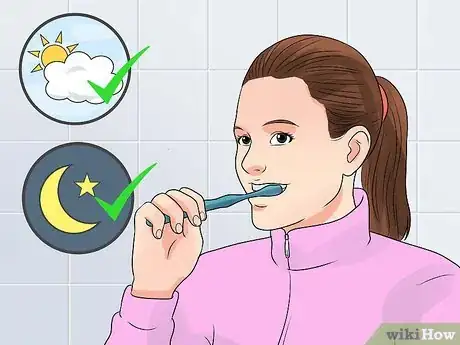

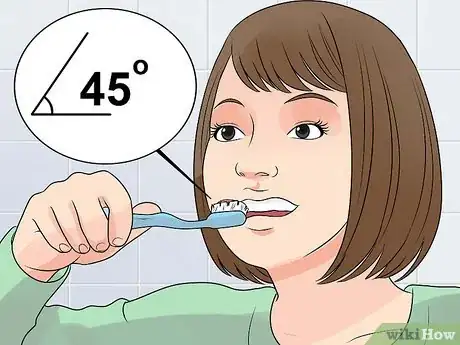


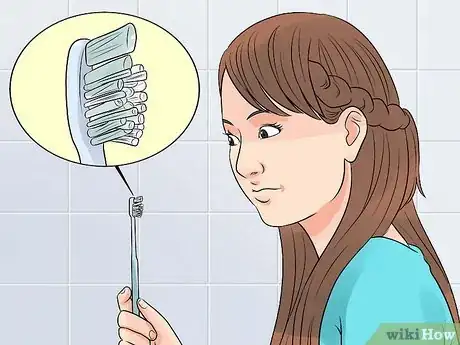

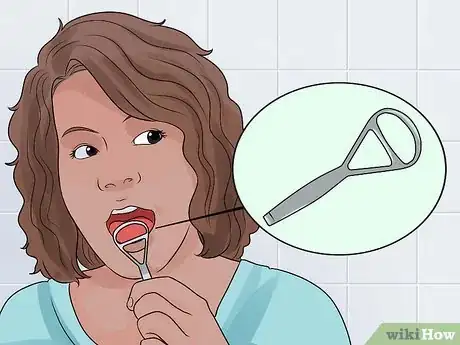
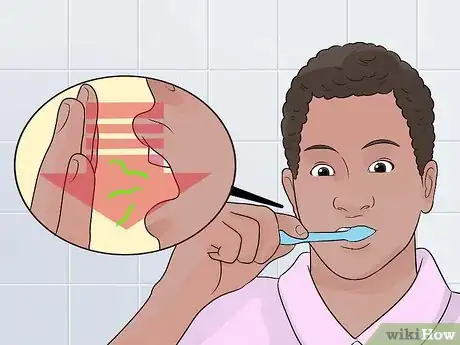


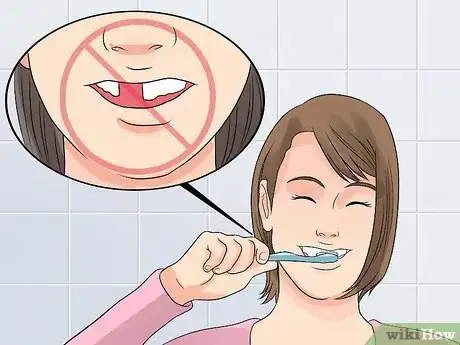

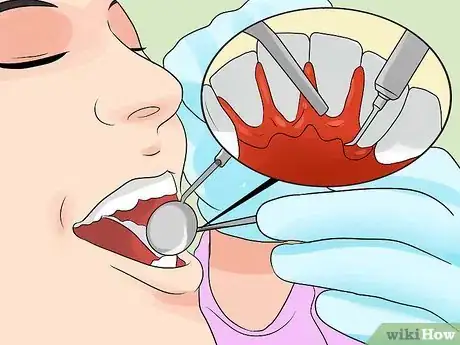
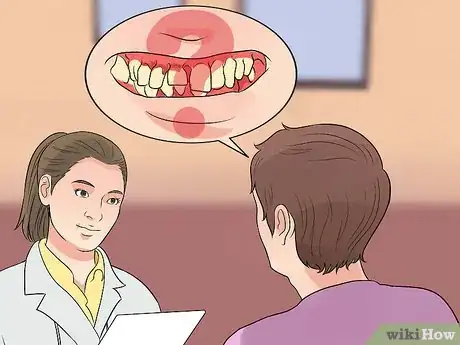
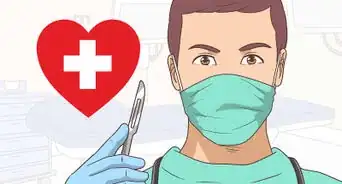
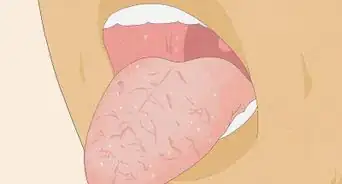
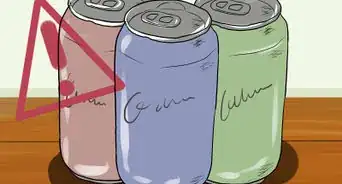

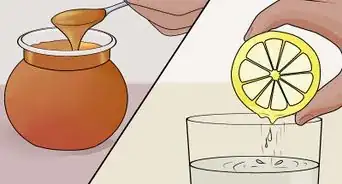


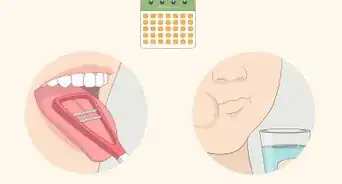
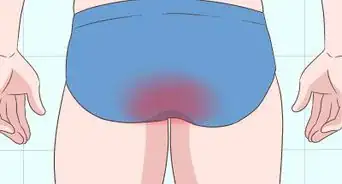

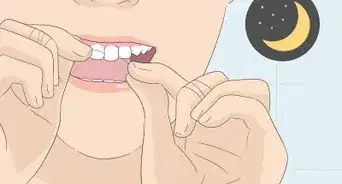
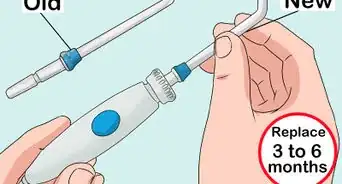








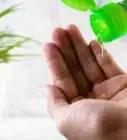
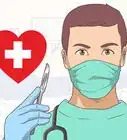

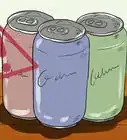



































Medical Disclaimer
The content of this article is not intended to be a substitute for professional medical advice, examination, diagnosis, or treatment. You should always contact your doctor or other qualified healthcare professional before starting, changing, or stopping any kind of health treatment.
Read More...